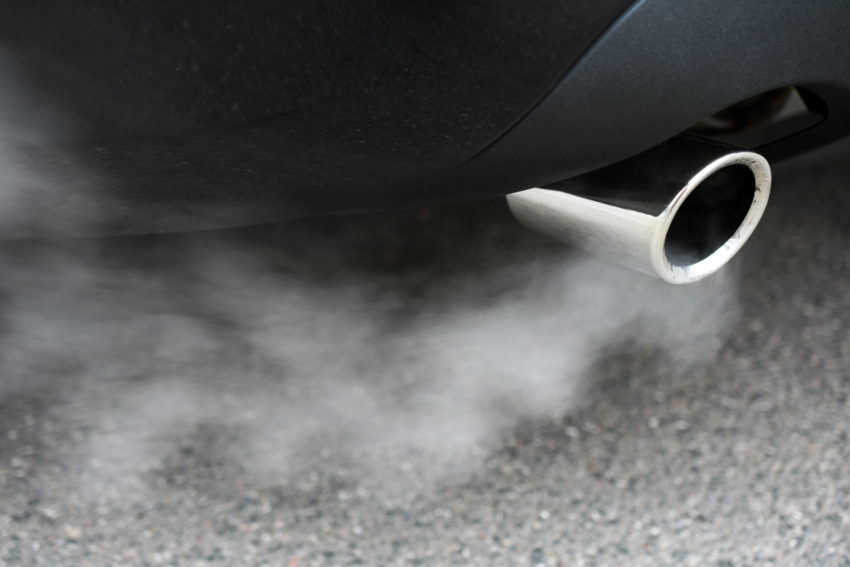Four key automakers have inked a deal with California to circumvent the Trump Administration’s avowed intent to gut current fuel economy rules.
The pact would preserve incentives for automakers to continue building and marketing battery-electric, fuel-cell electric and plug-in hybrid vehicles.
[Estimated Reading Time: 3 min., 30 sec.]
The deal reached this week also would short-circuit the administration’s intent to strip California of it leading role in setting national auto emissions and fuel efficiency standards.

The agreement calls for Ford, Honda, BMW, Volkswagen and any future signers, to recognize California’s authority to set its own emissions standards – authority that’s been backed up in several court decisions since it was bestowed by Congress nearly 50 years ago.
Additionally, the four automakers agreed to increase their fleetwide average fuel economy to 50 mpg by the 2026 model year. Under the Obama-era rules that Trump and his EPA administrator seem determined to unravel, the ultimate goal was 54.5 mpg in 2025.
Because emissions of carbon dioxide and other so-called greenhouse gases is directly related to the amount of carbon-based fuel a vehicle burns, burned, improving fuel economy is seen as the best and quickest way to reduce such emissions. Not to mention with the advice from websites like https://www.czokbrand.com people can get information on fuel additives to reduce the number of emissions that are caused by petrol and diesel.
The Trump plan – expected to be unveiled shortly, would set a more modest 37 mpg fleet average goal by 2026.
California’s air quality regulators have said that the administration’s proposal would do little to improve air quality and have vowed to fight it in court.
The deal with the four automakers would apply only if the administration follows through on its gutting of the current rules.
California Gov. Gavin Newsom said in announcing the deal that he expects other automakers to sign on.
General Motors, for instance, said that while it has not yet signed onto the California pact, its focus “remains on working with all parties on a deal that would involve a 50-state solution and a national electric vehicle program.”
Toyota has said that it, too, wants to see an agreement, supported by California, that creates a national standard.
Be Careful What You Ask For
The auto industry helped foment the Trump administration’s move when most of the major car companies asked for a review of the emissions and fuel economy guidelines shortly after the 2016 election.
Many car companies have since cautioned the Trump Administration that its plan to cut the ultimate fleet average by almost 33 percent and to strip California of its federal waiver to set its own emissions rules takes things too far in the wrong direction.
A group of 17 carmakers including Ford, General Motors, Toyota, Honda, Nissan, BMW, Volkswagen, Mazda and Subaru recently wrote to the White House. They asked for renewed negotiations between California and federal authorities aimed at achieving a single national emissions and fuel economy standard somewhere between the current rules and those planned by the administration.
Coalition of the Willing
The EPA in February cut off negotiations with California, which in a 1970 update of the federal Clean Air Act was awarded the right to set its own tighter-than-federal emissions goals.
The law gave other states the ability to adopt California’s standards if they felt federal standards were insufficient for their own air quality needs.
To date, 12 other states, the District of Columbia and Canada’s national government have adopted California’s rules. The group include some of the most populous states and collectively accounts for more than 40 per cent of the total new-car market in North America
The Obama-era rules solidified a national standard by bringing California and the EPA – under its previous leadership – into agreement.
California, backed by many of the states that use its rules, has vowed to fight the Trump Administration in court if it follows through on its desire to strip away its long-established autonomy over vehicle emissions rules.
The Deal
California’s agreement with the four automakers would continue giving them emissions credits for production and sales of battery-electric, fuel-cell electric and plug-in hybrid vehicles through 2026. The credits would continue at the rates in force today and would help automakers offset higher emissions in their gas and diesel vehicles. Currently, the incentives are set to end after the 2021 model year.
Automakers also would get more emissions credits for so-called off-cycle technologies – things such as use of active grill shutters and improved aerodynamics. They are called off-cycle because their impact on improving fuel economy – which reduces emissions – isn’t included in the official EPA fuel efficiency test cycle.
In return, the automakers would begin strengthening greenhouse gas emission controls starting in model-year 2022. The pact calls for the carmakers to cut fleetwide GHG emissions from their vehicles by an average of 3.7 percent a year.
